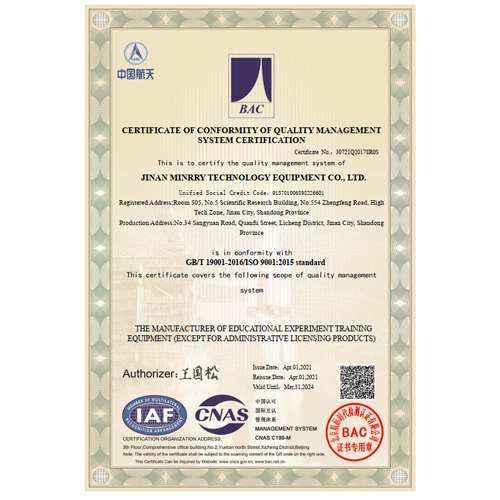Whatsapp: 0086-15153106200
E-mail: admin@minrry.com MR011R Domestic Refrigerator System Study Unit Air conditioning Training Equipment Teaching Equipment
To study the Domestic Refrigerator System and determine its power consumption, COP, theoretical & actual refrigerating effects, refrigerant flow rate & effect of door opening on power consumption & also students can visualize automatic operation of unit using a thermostat and draw PH and T-S diagrams using different refrigerants:
a) R134a (HFC)
b) R152a (HFC)
c) R290/R600a (50% / 50% by weight) [HC] or R600a and R290

EXPERIMENTAL SETUP
210 Litter
Refrigerator body must be same for the different refrigerants; change can be made in compressor (hermetically sealed compressor), air cooled condenser and Expansion valve (Capillary Tube) if required
Refrigerator should be designed for same refrigeration capacity with different refrigerants
Refrigerator should be branded
Sensors used for pressure and temperature should be digital, branded and accurate
Amount of electricity consumed by every part should be measurable with an instrument (i.e. energy meter)
Temperature (Dry as well as wet bulb) and pressure of in/out air from condenser and evaporator should be measured

Suitable filter drier
Temperature and pressure of in/out refrigerant from every part of refrigerator should be measured
System should be leak proof and safe especially when using R290 /R600a refrigerants
System should be frost free
